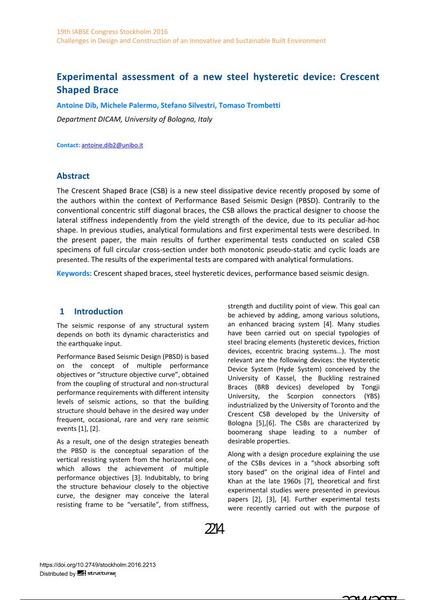Experimental assessment of a new steel hysteretic device: Crescent Shaped Brace

|
|
|||||||||||
Détails bibliographiques
| Auteur(s): |
Antoine Dib
(Department DICAM, University of Bologna, Italy)
Michele Palermo (Department DICAM, University of Bologna, Italy) Stefano Silvestri (Department DICAM, University of Bologna, Italy) Tomaso Trombetti |
||||
|---|---|---|---|---|---|
| Médium: | papier de conférence | ||||
| Langue(s): | anglais | ||||
| Conférence: | IABSE Congress: Challenges in Design and Construction of an Innovative and Sustainable Built Environment, Stockholm, Sweden, 21-23 September 2016 | ||||
| Publié dans: | IABSE Congress Stockholm, 2016 | ||||
|
|||||
| Page(s): | 2214-2220 | ||||
| Nombre total de pages (du PDF): | 7 | ||||
| Année: | 2016 | ||||
| DOI: | 10.2749/stockholm.2016.2213 | ||||
| Abstrait: |
The Crescent Shaped Brace (CSB) is a new steel dissipative device recently proposed by some of the authors within the context of Performance Based Seismic Design (PBSD). Contrarily to the conventional concentric stiff diagonal braces, the CSB allows the practical designer to choose the lateral stiffness independently from the yield strength of the device, due to its peculiar ad-hoc shape. In previous studies, analytical formulations and first experimental tests were described. In the present paper, the main results of further experimental tests conducted on scaled CSB specimens of full circular cross-section under both monotonic pseudo-static and cyclic loads are presented. The results of the experimental tests are compared with analytical formulations. |
||||
